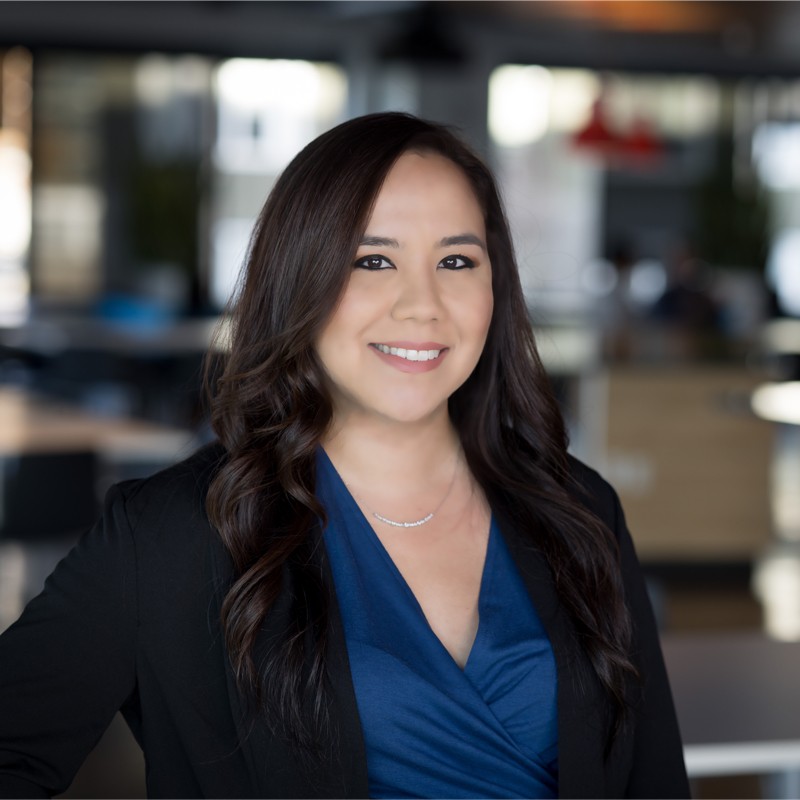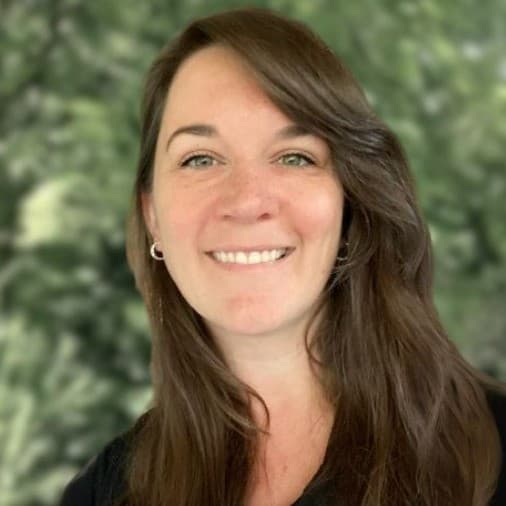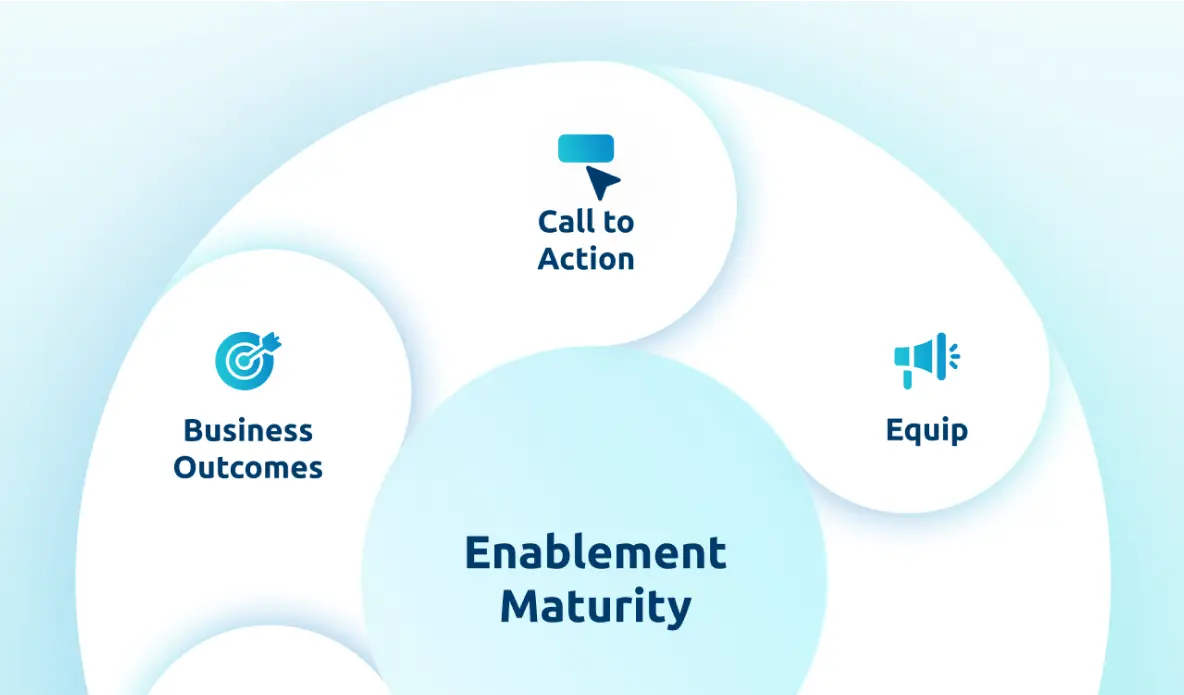According to the State of Sales Enablement Report from 2024, 76% of executive leaders say that an enablement platform is key to improving overall sales performance. So how can an enablement platform help drive momentum at your organization?
Shawnna Sumaoang: Hi, and welcome to the Win Win podcast. I’m your host, Shawnna Sumaoang. Join us as we dive into changing trends in the workplace and how to navigate them successfully.
Here to discuss this topic is Kate Shearer, the senior manager of sales enablement at Antech Diagnostics. Thanks for joining us, Kate. I’d love for you to tell us about yourself, your background, and your role.
Katherine Shearer: Thank you for having me. My name is Kate Shearer, I’m the senior manager of sales enablement at Antech Diagnostics. We’re part of Mars Global Incorporated. I’ve been in the sales industry for about six years and in the veterinary industry for, about 15—I can’t believe it’s been that long. I oversee sales enablement for Antech Diagnostics and we’re made up of about 250 sales professionals across six or seven specialized sales role types and help with enablement for an entire organization of about 400 commercial and sales professionals.
SS: I appreciate you joining us, Kate. I know that Antech Diagnostics has had a lot of momentum over the last year, including a recent acquisition. How has this growth trajectory influenced your enablement strategy?
KS: It has been part and parcel of shaping our enablement strategy. Our org has just rocket launched in terms of growth, new role types, and different departments that have been introduced all in the last year. We have had to be a lot more thoughtful, purposeful, [and] strategic about how we communicate, how we use our sales tools, and how we train on them.
We used to be very wild, wild west. We could roll something out and train on it, communicate it as it was happening, and we have to be a lot more planful now that we’re managing a much larger organization. [There’s] a steeper learning curve culturally, just in terms of what folks need to learn new lines of business [and] new products in a new environment for them to navigate.
We needed to earn trust very quickly—we had to have a single source of truth and a consistent way that we were communicating and engaging with the organization.
SS: In your opinion, Kate, what is the strategic advantage of an enablement platform when navigating change like an acquisition?
KS: I think the number one value that Highspot had for us during our acquisition was [it] streamlined communication and a central source of truth.
There’s a quote: good communication is the bridge between confusion and clarity. Highspot was absolutely that very early on in our integration and acquisition and it has remained that through the period. We probably did our company a little bit of a disservice because it was so easy.
It was one of the first platforms that we integrated that we got our newly acquired company logged onto and using. So a massive amount of change management. We were able to use the platform to ensure that we had consistent, clear communication across all levels of the organization. We were able to really reduce confusion and misinformation.
And as we had updates, like vital information, we were able to communicate those in real-time and have them in a repository where folks could go back and reference them. If they miss that communication when it went out initially, we’re also able to use Highspot to monitor performance and get feedback.
So we were able to see our folks logging on. Are they using their sales tools? Are they going through the training modules? And we were able to understand who was engaged, who needed help, where folks were lagging behind. Or, where we needed to reassess as a company the strategic direction we were going and offer more support to our sales professionals.
SS: And before you had Highspot as your enablement platform, you actually leveraged a different tool. What were some of the challenges you faced that led you to make this change?
KS: So before we used Highspot, we did use another platform. Some of the challenges we had in the other platform that we were using were primarily around just ballooning of content.
We were like hoarders, we wanted to keep every single thing. That made it very difficult to navigate [and] for our organization to find the content they were looking for. And then when they did find it, often it was outdated or there were duplicative versions of it, and we weren’t really sure when it was updated, or who had made it, [or] who had published it.
We also didn’t have a feedback mechanism, so we would get all of these emails and questions; how did they find something, or [to] let us know something expired. Just very manual, it was just a file folder where everything was going, and we were managing a lot of the support of it just through email and conversation, so it became pretty inefficient to manage.
SS: Definitely, sounds like it. How have you been able to overcome those challenges and how have you leveraged Highspot to help?
KS: So, Highspot’s search feature is so good, it’s just as good as Google. I was so happy when our sales representative told us that pre-sales process, and it’s very true.
So, very happy about it. The search feature we leverage heavily, as well as the ask a question—the AI feature. The more we feed Highspot, the better information we’re getting out of it, so we have good ROI the more we leverage it. Our company also loves synonyms and acronyms, we need an acronym analyst hired at Antech.
The search feature has a function where you can enter synonyms and acronyms. So if I have a rep that’s searching for DOS or the directory or service list, it’s going to bring up our 2024 directory of service, which is what I know they’re looking for. So we use that heavily and we also use the expiration dates on content.
Everything gets a one-year expiration date. If it’s not organically updated just through our typical commercial process, we have a force of function for folks to lay eyes on it and make sure that it’s getting looked at [and] reviewed. Typically when we do pull it up and we do have to review it, it’s getting updated. So it helps us stay accountable that the content is effective, up to date, and relevant for the sales team.
SS: So you’ve seen high adoption statistics across the board, including an impressive 91% recurring usage, which earned you a nomination in the Highspot Impact Awards last year. What are some of your best practices for driving rep adoption?
KS: We say this all the time in so many meetings: if it is not in Highspot, it’s not real. It’s a rumor and you don’t listen to it. So we really use Highspot as a central source of truth for our formal, legal, and approved information. We have a weekly sales bulletin that we send out every Monday to our commercial organization with all the updates from the last week, and what’s coming the week ahead.
All of the call-to-action links in that link out to Highspot. So, it’s highlighting all those communications and again, using Highspot as that repository to memorialize them, but not for too long. We have that expiration date on there, so somebody is not searching it in five years and finding something that I’m going to send tomorrow.
We’ve also used Highspot University to help train some of our sales professionals and get up to speed as quickly on how to use Highspot, especially for some of our new buyers.
SS: I love that. And you also began leveraging Highspot for training and coaching last year, and you’re already seeing 85% active learners. What are some of your best practices for developing effective learning programs and how does Highspot help?
KS: So for Highspot, we had used the training and coaching to assign pre-work ahead of our national sales meeting. We had a very big product launch focus at our sales meeting and we wanted to make sure that folks came in with some exposure.
They had time to permeate on some of the information we were going to share and had time to practice. We were able to assign out pre-work and also empower some of the managers to see [the] progress of their team on their learning path. Highspot was really the right time for our acquisition. We had a company that had a different type of diagnostics, in-house diagnostics joined with ours, which is Reference Lab, which is a service-based company.
Highspot was really good at bridging the knowledge gap and cross-pollinating across those groups. So as we went into that meeting everyone had their bearings on what we were learning about, and what we were talking about, and we were able to show up for the first time as a single unified company.
We also use the video feature for reflection and feedback. We have some other ideas and other ways that we’re thinking about incorporating that into our training and learning process in the future.
SS: Exciting. And I know another area of innovation that you started to explore in the platform is around AI.
How are you leveraging AI to continue to scale efficiency amongst your teams?
KS: I am such a big proponent of AI. I will sell all my information to anyone who wants it if it makes my life easier. So Highspot has done a great job with that. I love putting in content, you can hit the generate description button, and it gets 95%, if not more, accurate in the description.
Saves me so much time. Previously, we would either leave them blank or put in a quick blurb about what it is. And the AI descriptions it’s able to generate are just so much more helpful and so much more informative. Especially as we’re growing so quickly and we have so many new sales professionals coming on.
It helps us increase the quality of the content that we’re putting in there. We also use the ask questions feature for training and coaching. Sometimes our brains get a little tired and we’re like, what should this quiz question be? We hit the ‘ask a question’ button for the coaching feature for it to give us some question ideas for the learning modules, so we hack that a little bit.
When we were at our national sales meeting, we did a little bit of training on Highspot and we shared with the sales organization how to use the AI feature to write an introduction email in a pitch, for example. And every single room, every time I hit that AI button, the whole room went, “Whoa!”
It was such a high, it was so nice showing them that. So it created a lot of value and a lot of stickiness so they could continue to use it in their sales process. It helps me from an administrative standpoint, [and] it helps our sales reps move a little more efficiently. Anything that’s AI—it’s turned on, I’m using it, and I love it.
SS: Now, as you have expanded and evolved your enablement strategy, your team has leveraged analytics and Highspot to measure impact. How are you leveraging scorecards and reports to optimize your efforts?
KS: I love this question. So we just recently launched internally with our commercial marketing team, what we’re calling the content quality program. Old habits die hard. We do still have a lot of content in Highspot, but we’re trying to be more disciplined about it, especially as we have the analytics now.
So we say, even though we’re holding on to this piece, like reps really aren’t using it, we can sunset it and no one’s going to be upset. So with our content quality program, we’re using the scorecard to partner with our product managers, as well as our marketing managers to go through the data of how this is being used and how clients are engaging with it. [Then] to make decisions around if it can be consolidated into another sales tool and if it should be sunset, evolved, [or] what type of change needs to happen with the content.
The analytics are extremely helpful there to go against some of our assumptions. Maybe that something’s being used a lot or a little, and really shows us the field reality of how it’s being utilized. We also have a plan to teach the sales managers how they can use the team scorecards to see how their team is performing and using Highspot.
Because broadly, we have really high adoption, and then we’ll have a few pockets where there are folks who don’t use this heavily. We want to help managers have visibility into how their team uses it and see if they have any opportunities to close a learning gap. Maybe somebody needs more training or coaching, and we’re all there to help with those things, too. Just need to help make them aware, and the scorecards are helpful for that.
SS: Amazing. Thank you for those examples, Kate. Last question for you. Looking ahead, how do you plan to continue to evolve your enablement strategy alongside the momentum of your business?
KS: That’s a good question. It’s a big one. So, one of the things on our pipeline—as we’re looking at introducing a more formal sales methodology—we’re also going to be assessing Digital Sales Rooms a little bit closer. We think those are going to complement the direction we want to go strategically from a sales process.
We also love the feature preview pane in Highspot. We live in there, we check it like once a week, and that actually inspires just the art of the possible. There’s a good way for us to get some conversations going about how we continue to evolve our strategy and not let it get stale because I think where we are right now, we’re chugging. We have a good system going, but I want to be in love with people’s problems and make sure we’re continuously talking about how we keep doing good.
SS: I love that. And that is the perfect way to conclude this podcast. Kate, thank you so much for joining us. I really appreciate your insight.
KS: Thank you for having me, Shawnna.
SS: To our audience. Thank you for listening to this episode of the Win Win Podcast. Be sure to tune in next time for more insights on how you can maximize enablement success with Highspot.




